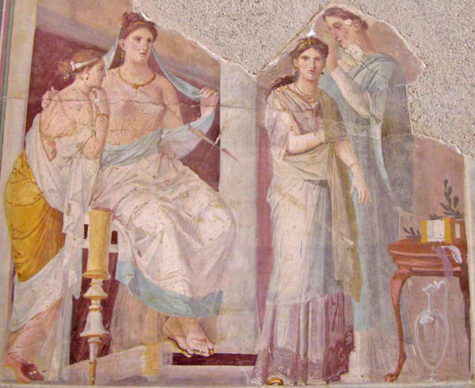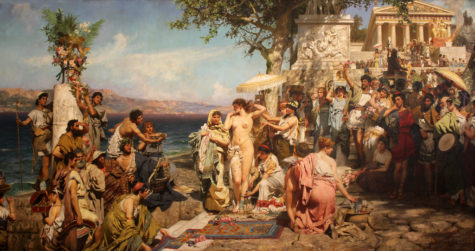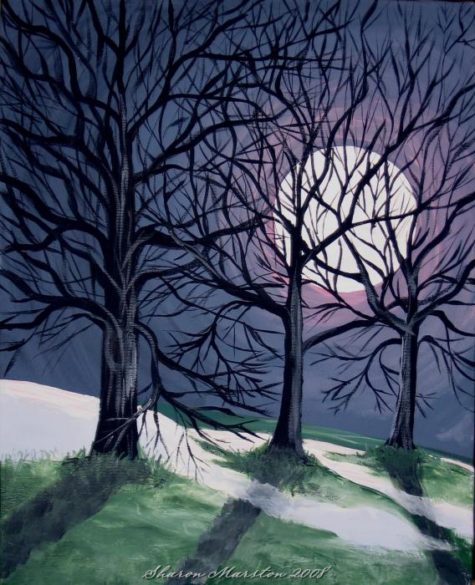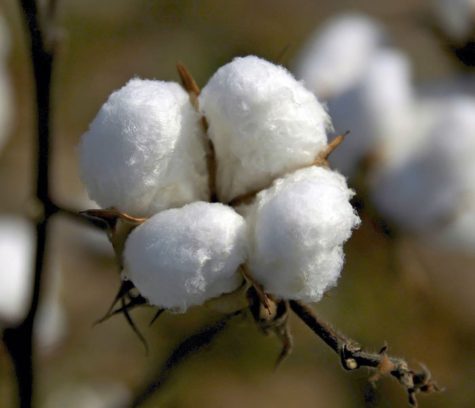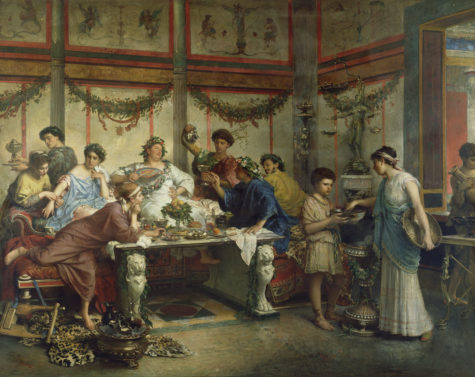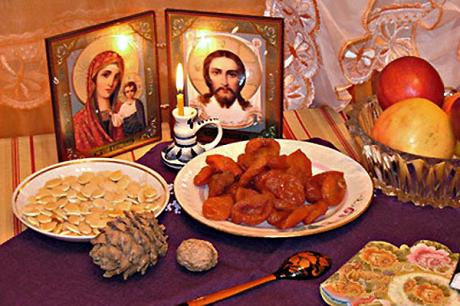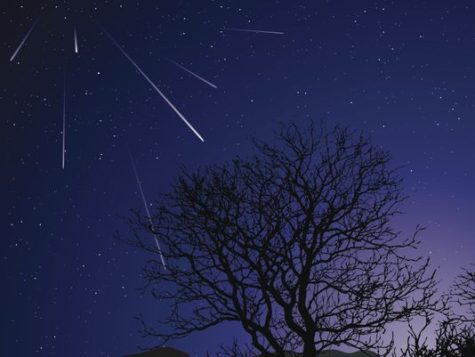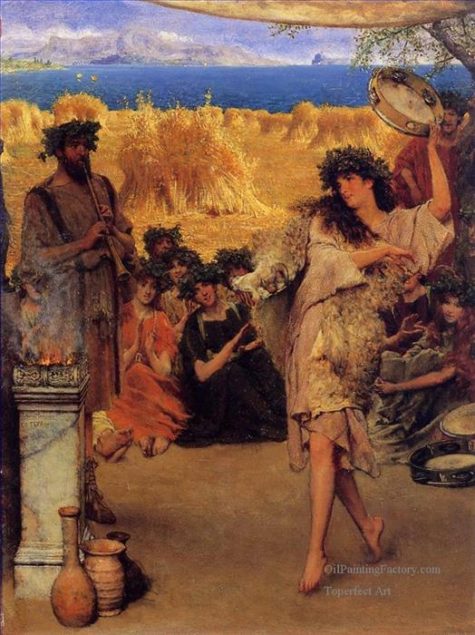December
The goddess Bona Dea also had a May festival, which is better known. The winter festival was held in December, at the home of the current senior annual Roman magistrate cum imperio, whether consul or praetor. It was hosted by the magistrate’s wife and attended by respectable matrons of the Roman elite. This winter festival is not marked on any known religious calendar but was dedicated to the public interest and supervised by the Vestals, and therefore must be considered official.
Men were not allowed to know Her name, never mind speak it, and they were also forbidden from Her secret festival. There were other taboos concerning the worship of the Bona Dea: neither wine nor myrtle were to be mentioned by name during Her secret festival, likely because they were both sacred to Her and therefore very powerful.
Shortly after 62 BC, Cicero presents it as one of very few lawful nocturnal festivals allowed to women, privileged to those of aristocratic class, and coeval with Rome’s earliest history.
Festival Rites:
The Winter festival is known primarily through Cicero’s account, supplemented by later Roman authors. First, the house was ritually cleansed of all male persons and presences, even male animals and male portraiture. Then the magistrate’s wife and her assistants made bowers of vine-leaves, and decorated the house’s banqueting hall with “all manner of growing and blooming plants” except for myrtle, whose presence and naming were expressly forbidden.
A banquet table was prepared, with a couch (pulvinar) for the goddess and the image of a snake. The Vestals brought Bona Dea’s cult image from her temple and laid it upon her couch, as an honored guest. The goddess’ meal was prepared: the entrails of a sow, sacrificed to her on behalf of the Roman people, and a libation of sacrificial wine.
The festival continued through the night, a women-only banquet with female musicians, fun and games, and wine; the last was euphemistically referred to as “milk”, and its container as a “honey jar”. The rites sanctified the temporary removal of customary constraints imposed on Roman women of all classes by Roman tradition, and underlined the pure and lawful sexual potency of virgins and matrons in a context that excluded any reference to male persons or creatures, male lust or seduction.
According to Cicero, any man who caught even a glimpse of the rites could be punished by blinding. Later Roman writers assume that apart from their different dates and locations, Bona Dea’s December and May 1 festivals were essentially the same.
Sources: Wikipedia and Thalia Took
Poseidon was once worshiped in every part of Greece as a God of general importance to the community. In ancient Greece, the feast day in his honor was widely celebrated at the beginning of the winter.
POSEIDO′NIA (ποσειδώνια), a festival held every year in Aegina in honour of Poseidon. It seems to have been celebrated by all the inhabitants of the island, as Athenaeus calls it a panegyris, and mentions that during one celebration Phryne, the celebrated hetaera, walked naked into the sea in the presence of the assembled Greeks. This was possibly because in Greek mythology, the sea god Poseidon is one of the most lascivious of the gods, producing more offspring than other note worthily randy gods.
Greek calendars vary from place to place, but in Athens and other parts of ancient Greece, there is a month that corresponds to roughly December/January that is named Poseideon for the sea-god Poseidon. The month of Poseidonia’s most anticipated and most important festival is the feast of the Poseidonia, a winter festival in honor of Poseidon. Since Poseidon is a sea god it is curious that his festival would be held during the time the Greeks were least likely to set sail.
It was celebrated with the pouring and drinking of wine, merriment, bonfires, and most likely a form of gift giving. Not much more is known about the way it was celebrated.
On a larger scale, “there was a festival once every fifth year at Sunium in honor of Poseidon – evidently, then, a major event. Also, animal offerings to Poseidon were a common feature at the feast days of other gods, including the “festival at the temple of Hera on the 27th of Gamelion,” which honored the goddess “together with Zeus the Accomplisher, Kourotrophos and Poseidon.”
Related Festivals:
- Haloea – Jan 8 thru 9th
- Poseidonia of Aegina – A Midwinter Festival lasting as long as 2 months
Collected from various sources
The last moon phase of the year is the Big Winter Moon in December, also called Long Nights Moon, or the Cold Moon.
Correspondences:
- Colors: White, red, and black
- Gemstones: Obsidian, ruby, serpentine
- Trees: Pine, holly
- Gods: Minerva, Osiris, Athena, Persephone and Hades
- Herbs: Ivy, mistletoe, holly and berries, cinnamon
- Element: Fire
As the days get shorter and Yule approaches with the longest night of the year, we force ourselves to get through the darkness because eventually we will see the sunlight and warmth again. Think about the things in your life that you’ve had to endure. Sometimes, a part of us must die in order to be reborn. Now is the perfect time for spiritual alchemy — time to evaluate your life, and know that you’ll survive the dark times.
If you’ve already put the darkness behind you, take your good fortune and share it with others. When it’s cold outside, open your heart and home to friends and family. Reach out to people who might be suffering from the chill of winter, either spiritually or physically.
source: about.com
What follows is a list (in alphabetical order) of the names given to the December moon. Also listed is the tradition and/or origin of that moon name:
- Aerra Geola ~other
- Ashes Fire Moon ~San Juan
- Before Yule Moon ~Cherokee
- Big Bear’s Moon ~Winnebago
- Big Winter Moon ~Creek
- Bitter Moon ~Chinese
- Cold Moon ~Algonquin, Celtic
- Cold Time Moon ~Mohawk
- Deer Horn Shedding Moon ~Sioux
- Frost Fish Moon ~Passamaquoddy
- Heavy Snow Moon ~other
- Kaitvitjuitk ~Inuit
- Little Finger Moon ~other
- Long Nights Moon ~Algonquin
- Mid-Winter Moon ~other
- Night Moon ~Taos
- Oak Moon ~Janic (full), Medieval English
- Peach Moon ~Choctaw
- Popping Trees Moon ~Sioux, Arapaho
- Real Goose Moon ~Kiowa
- Respect Moon ~Hopi
- Running Wolves Moon ~Cheyenne
- Small Spirits Moon ~other
- Snow Moon ~Cherokee, Janic (dark)
- Turning Moon ~other
- Twelfth Moon ~Dakotah
- Under Burn Moon ~other
- Winter Maker Moon ~other
- Wintermonat Moon ~other
- Wolf Moon ~other
- Yellow Leaves Moon ~other
In India a ritual was held when the the cotton boles (pods) ripen and burst. When this change in the plant occurs, it was the custom to select the largest plant in the field and having sprinkled it with buttermilk and rice water, to bind it all over with pieces of cotton taken from other plants in the field.
The selected plant is called “Mother Cotton” and after salutations are made to it, prayers are offered that the other plants may resemble it in the richness of their produce.
In other areas of India, when the cotton pods begin to burst, women go round the field, and as a kind of lustration, throw salt into it, with similar supplications that the produce may be abundant. The practice appears to be observed in somewhat similar fashion to the Ambravalia of the Romans and the Field-Litanies of the English Church.
Cotton is a kharif crop which requires 6 to 8 months to mature. Dates for this ritual vary from year to year, region to region because its time of sowing and harvesting differs in different parts of the country depending upon the climatic conditions. In Punjab and Haryana it is sown in April-May and is harvested in December-January that is before the winter frost can damage the crop.
Brumalia is an ancient Roman winter festival incorporating many smaller festivals celebrating Saturn, Ops and Bacchus. The word Brumalia comes from the Latin bruma meaning “shortest day.” By the Byzantine era, celebrations commenced on 24 November and lasted for a month, until Saturnalia and the “Waxing of the Light.” It is said to have been instituted by Romulus, the legendary founder of Rome.
According to 6th century historian John Malalas1, Romulus entertained his Senators, army and staff throughout the month, assigning each day a letter and inviting those whose names began with the assigned letter to dinner parties. He also encouraged his Senators to likewise entertain their friends and staff in the same manner. According to John the Lydian, sacrifices were made of pigs to Demeter and Cronus and goats were sacrificed to Dionysus2 and speculates that Cronus is honored at this time because of his banishment into the darkness of Tartarus.
The festival marked a break for the Senate and included night-time feasting, drinking, and merriment. During this time, prophetic indications were taken as prospects for the remainder of the winter. It also incorporated a number of smaller holidays associated with various Gods.
Some people celebrated Brumalia by sacrificing goats and pigs, while devotees of the god Dionysus inflated goat skins and then jumped on them. It is also believed that each day of the festival was assigned a different letter of the Greek alphabet, starting with alpha (α) on November 24 and finishing with omega (ω) on December 17.
The festival was celebrated as late as the 6th century, until emperor Justinian’s repression of paganism.
Some modern Pagans use the word Brumalia to simply indicate the winter holiday season including all of its various festivals and activities. This seems quite in keeping with the spirit of the ancient use of the word.
Source: Wikipedia and Witchipedia
The Nativity Fast is a period of abstinence and penance practiced by the Eastern Orthodox, Oriental Orthodox, and Eastern Catholic Churches, in preparation for the Nativity of Jesus, (December 25).
This is a joyous fast in anticipation of the Nativity of Christ. That is the reason it is less strict than other fasting periods. The fast is divided into two periods. The 1st period is November 15th through December 19th when the traditional fasting discipline (no meat, dairy, fish, wine, and oil) is observed.
There is dispensation given for wine and oil on Tuesdays and Thursdays. Similarly, fish, wine, and oil are permitted on Saturdays and Sundays. The 2nd period is December 20th through 24th when the traditional fasting discipline (no meat, dairy, fish, wine, and oil) is observed. There is dispensation given for wine and oil only on Saturday and Sunday during this period. Here are the guidelines:
- Meat – Abstain
This includes: beef, chicken, pork, turkey, elk, veal, lamb, deer, rabbit, buffalo, and so forth
- Dairy – Abstain
This includes milk, eggs, cheese, butter, yogurt, cream, and so forth
- Fish – Permitted only on Saturdays and Sundays before December 20.
This includes fish with a backbone, but does not include shrimp, octopus, shellfish, squid, or other seafood. Note: (some permit fish Tuesdays and Thursdays also)
- Wine – Permitted only on Tuesdays, Thursdays, Saturdays, and Sundays before December 20.
Some include all types of alcohol in this category.
- Oil – Permitted only on Tuesdays, Thursdays, Saturdays, and Sundays before December 20.
Abstinence includes refraining from the food and drink mentioned above, as well as from smoking. The Eucharistic Fast means abstaining from at least the previous midnight for communing at a morning Liturgy.
The Purpose of Fasting
The purpose of fasting is to focus on the things that are above, the Kingdom of God. It is a means of putting on virtue in reality, here and now. Through it we are freed from dependence on worldly things. We fast faithfully and in secret, not judging others, and not holding ourselves up as an example.
Fasting in itself is not a means of pleasing God. Fasting is not a punishment for our sins. Nor is fasting a means of suffering and pain to be undertaken as some kind of atonement. Christ already redeemed us on His Cross. Salvation is a gift from God that is not bought by our hunger or thirst.
- We fast to be delivered from carnal passions so that God’s gift of Salvation may bear fruit in us.
- We fast and turn our eyes toward God in His Holy Church.
- Fasting and prayer go together.
- Fasting is not irrelevant.
- Fasting is not obsolete, and it is not something for someone else.
- Fasting is from God, for us, right here and right now.
- Most of all, we should not devour each other.
- We ask God to “set a watch and keep the door of our lips.”
Do NOT Fast
- Between December 25 and January 5 (even on Wednesdays and Fridays);
- If you are pregnant or nursing a newborn;
- During serious illness;
- Without prayer;
- Without alms-giving;
- According to your own will without guidance from your spiritual father.
Source: Antiochian
The Taurids is a long-running minor meteor shower producing only about 5-10 meteors per hour. It is unusual in that it consists of two separate streams. The first is produced by dust grains left behind by Asteroid 2004 TG10. The second stream is produced by debris left behind by Comet 2P Encke. The shower runs annually from September 7 to December 10. Best viewing will be just after midnight from a dark location far away from city lights. Meteors will radiate from the constellation Taurus, but can appear anywhere in the sky.
Source: SeaSky
August 25th is the Opconsivia, (or Opeconsiva or Opalia) the harvest festival of Ops, the Roman goddess of agricultural resources and wealth, also known as Opis. The festival marked the end of harvest, with a mirror festival on December 19 concerned with the storage of the grain.
- Themes: Opportunity; Wealth; Fertility; Growth
- Symbols: Bread; Seeds; Soil
About Ops: This Italian goddess of fertile earth provides us with numerous “op-portunities” to make every day more productive. In stories, Ops motivates fruit bearing, not just in plants but also in our spirits. She also controls the wealth of the gods, making her a goddess of opulence! Works of art depict Ops with a loaf of bread in one hand, and the other outstretched, offering aid.
To Do Today:
On this day, Ops was evoked by sitting on the earth itself, where she lives in body and spirit. So, weather permitting, take yourself on a picnic lunch today. Sit with Ops and enjoy any sesame or poppy breadstuff (bagel, roll, etc.) – both types of seeds are magically aligned with Ops’s money-bringing power. If possible, keep a few of the seeds from the bread in your pocket or shoe so that after lunch, Ops’s opportunities for financial improvements or personal growth can be with you no matter where you go. And don’t forget to leave a few crumbs for the birds so they can take your magical wishes to the four corners of creation.
If the weather doesn’t cooperate, invoke Ops by getting as close to the earth as you can (sit on your floor, go into the cellar). Alternatively, eat earthy foods like potatoes, root crops, or any fruit that comes from Ops’s abundant storehouse.
More About This Festival:
The Latin word consivia (or consiva) derives from conserere (“to sow”). Opis was deemed an underworld goddess who made the vegetation grow. Since her abode was inside the earth, Ops was invoked by her worshipers while sitting, with their hands touching the ground.
Although Ops is a consort of Saturn, she was also closely associated with Consus, the protector of grains and subterranean storage bins (silos). The festival of Consus, the Consualia, was celebrated twice a year, each time preceding that of Ops: once on August 21, after the harvest, and once on December 15, after the sowing of crops was finished.
The Opiconsivia festival was superintended by the Vestals and the Flamines of Quirinus, an early Sabine god said to be the deified Romulus. The main priestess at the regia wore a white veil, characteristic of the vestal virgins. A chariot race was performed in the Circus Maximus. Horses and mules, their heads crowned with chaplets made of flowers, also took part in the celebration.
Sources: Wikipedia and 365 Goddess
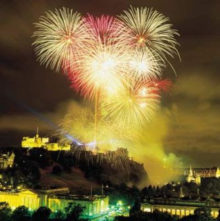 In Scotland, the last day of the year is called Hogmanay, the word children use to ask for their traditional present of an oatmeal cake (which is why this is also called Cake Day). Traditionally, children in small towns would wander about town, particularly in the more affluent neighborhoods, visiting their neighbors of the better class, crying at their doors, “Hogmanay!” or sometimes the following rhyme:
In Scotland, the last day of the year is called Hogmanay, the word children use to ask for their traditional present of an oatmeal cake (which is why this is also called Cake Day). Traditionally, children in small towns would wander about town, particularly in the more affluent neighborhoods, visiting their neighbors of the better class, crying at their doors, “Hogmanay!” or sometimes the following rhyme:
Hogmanay, trollolay,
Gie’s of your white bread
and none of your gray!
In obedience to which call, they are served each with an oaten cake. Immediately after midnight it is traditional to sing Robert Burns’ “Auld Lang Syne”
“Should auld acquaintance be forgot and never brought to mind?
Should auld acquaintance be forgot and auld lang syne
For auld lang syne, my dear, for auld lang syne,
We’ll take a cup o kindness yet, for auld lang syne.”
Fireworks and fire festivals are still common across Scotland, as are parties and celebrations of all kinds. There are many customs, both national and local, associated with Hogmanay. The most widespread national custom is the practice of ‘first-footing’ which starts immediately after midnight. This involves being the first person to cross the threshold of a friend or neighbor and often involves the giving of symbolic gifts such as salt (less common today), coal, shortbread, whisky, and black bun (a rich fruit cake) intended to bring different kinds of luck to the householder. Food and drink (as the gifts) are then given to the guests.
This may go on throughout the early hours of the morning and well into the next day (although modern days see people visiting houses well into January). The first-foot is supposed to set the luck for the rest of the year. Traditionally, tall dark men are preferred as the first-foot. And of course, the entire spirit of a Hogmanay party is to welcome both friends and strangers with warm hospitality and of course lots of kissing all-around!
It’s believed that Hogmanay originated with the invading Vikings who celebrated the passing of the winter solstice with much revelry, but the roots of Hogmanay perhaps reach back to the celebration of the winter solstice among the Norse, as well as incorporating customs from the Gaelic New Year’s celebration of Samhain.
In Rome, winter solstice evolved into the ancient celebration of Saturnalia, a great winter festival, where people celebrated completely free of restraint and inhibition. The Vikings celebrated Yule, which later contributed to the Twelve Days of Christmas, or the “Daft Days” as they were sometimes called in Scotland. The winter festival went underground with the Protestant Reformation and ensuing years, but re-emerged near the end of the 17th century
Each area of Scotland often developed its own particular Hogmanay ritual.
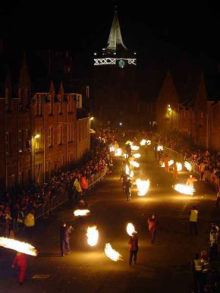 An example of a local Hogmanay custom is the fireball swinging that takes place in Stonehaven, Aberdeenshire in north-east Scotland. This involves local people making up ‘balls’ of chicken wire filled with old news paper, dried sticks, old cotton rags, and other dry flammable material up to a diameter of 60 cm. Each ball has approximately 1 m of wire, chain or nonflammable rope attached.
An example of a local Hogmanay custom is the fireball swinging that takes place in Stonehaven, Aberdeenshire in north-east Scotland. This involves local people making up ‘balls’ of chicken wire filled with old news paper, dried sticks, old cotton rags, and other dry flammable material up to a diameter of 60 cm. Each ball has approximately 1 m of wire, chain or nonflammable rope attached.
As the Old Town House bell sounds to mark the new year, the balls are set alight and the swingers set off up the High Street from the Mercat Cross to the Cannon and back, swinging their burning ball around their head as they go for as many times as they and their fireball last. At the end of the ceremony any fireballs that are still burning are cast into the harbor.
Many people enjoy this display, which is more impressive in the dark than it would be during the day. As a result large crowds flock to the town to see it, with 12,000 attending the 2007/2008 event. In recent years, additional attractions have been added to entertain the crowds as they wait for midnight, such as fire poi, a pipe band, street drumming and a firework display after the last fireball is cast into the sea. The festivities are now streamed live over the Internet.
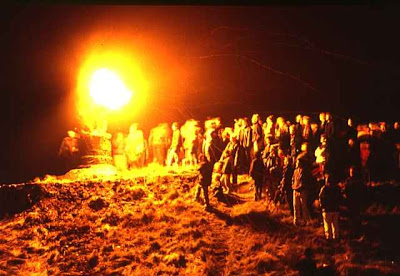
Another example of a pagan fire festival is the burning the clavie which takes place in the town of Burghead in Moray.In the east coast fishing communities and Dundee, first-footers used to carry a decorated herring while in Falkland in Fife, local men would go in torchlight procession to the top of the Lomond Hills as midnight approached. Bakers in St Andrews would bake special cakes for their Hogmanay celebration (known as ‘Cake Day’) and distribute them to local children.
In Glasgow and the central areas of Scotland, the tradition is to hold Hogmanay parties involving singing, dancing, the eating of steak pie or stew, storytelling and consumption of copious amounts of alcohol, which usually extend into the daylight hours of January 1.
Institutions also had their own traditions. For example, among the Scottish regiments, the officers had to wait on the men at special dinners while at the bells, the Old Year is piped out of barrack gates. The sentry then challenges the new escort outside the gates: ‘Who goes there?’ The answer is ‘The New Year, all’s well.’
An old custom in the Highlands, which has survived to a small extent and seen some degree of revival, is to celebrate Hogmanay with the saining (Scots for ‘protecting, blessing’) of the household and livestock. This is done early on New Year’s morning with copious, choking clouds of smoke from burning juniper branches, and by drinking and then sprinkling ‘magic water’ from ‘a dead and living ford’ around the house (‘a dead and living ford’ refers to a river ford which is routinely crossed by both the living and the dead). After the sprinkling of the water in every room, on the beds and all the inhabitants, the house is sealed up tight and the burning juniper carried through the house and byre.
The smoke is allowed to thoroughly fumigate the buildings until it causes sneezing and coughing among the inhabitants. Then all the doors and windows are flung open to let in the cold, fresh air of the new year. The woman of the house then administers ‘a restorative’ from the whisky bottle, and the household sits down to their New Year breakfast.
Collected from various sources
